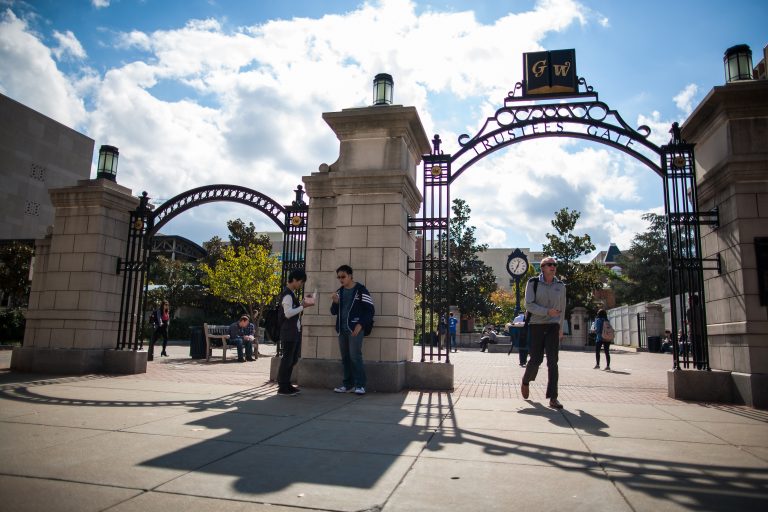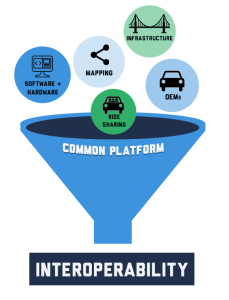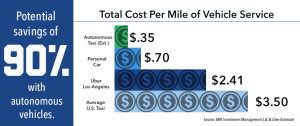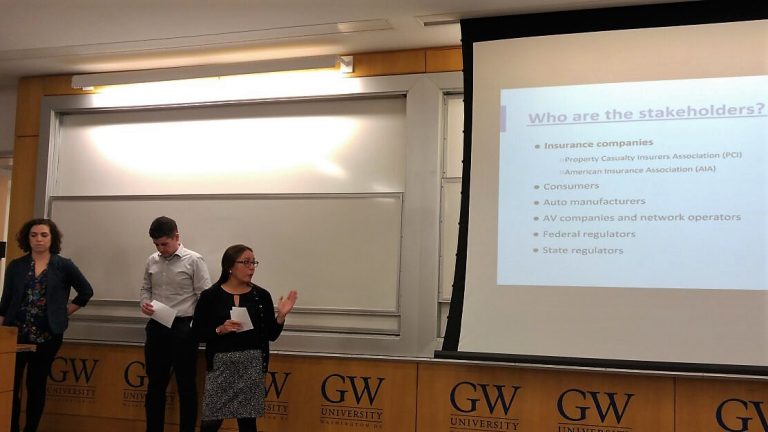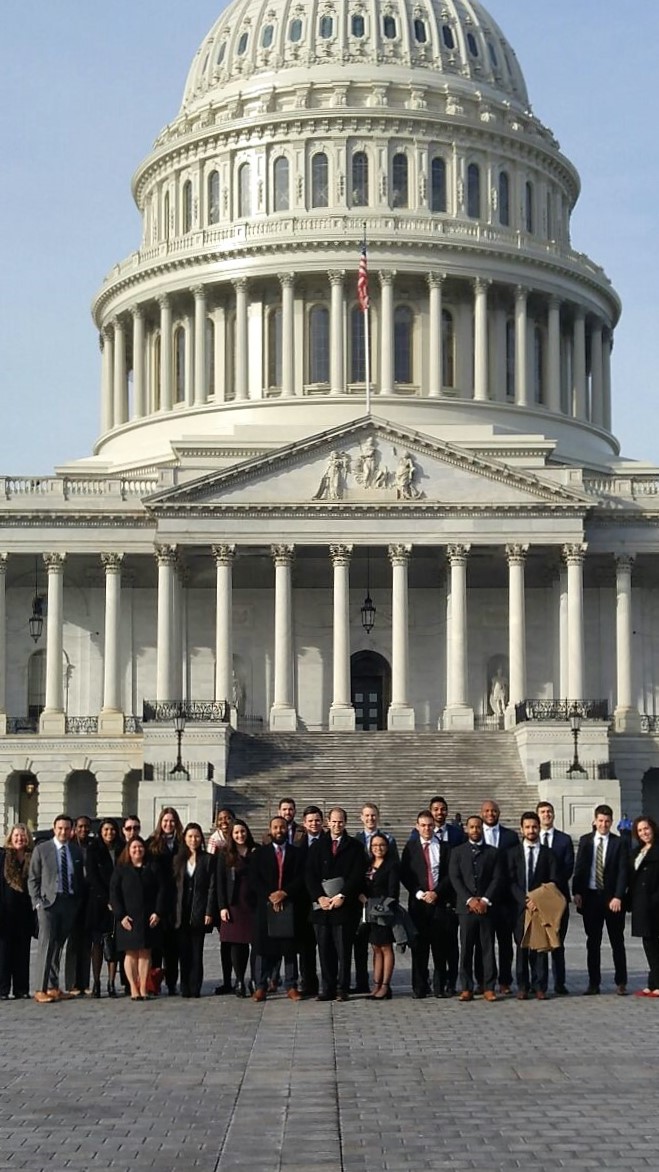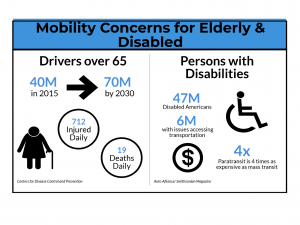Written by: Natalie Bernier, PMBA class of 2018; Kasey Chen, PMBA class of 2020; Chris Graff, PMBA class of 2018
Standardization, the ability for the critical components of Autonomous Vehicles (AV) to communicate over a common protocol, is essential to improving safety, reducing costs and resources, and making this innovative technology a success. Communication among systems is the key component of interoperability that is necessary for a safer, more convenient, and enjoyable future in transportation.
- Improve Safety - Innovation in the AV space is accelerating at a breakneck pace. While this helps ensure that some level of AV technology will be available to consumers by 2025, the variations in technology being developed could create proprietary silos of components that do not communicate effectively. Without a standardized platform, safety risks and costs will increase in the long term. Open source development of key critical systems is imperative to ensuring the consumer safety. Interoperability allows instantaneous communication among vehicles, alerting one another of roadside hazards and increasing sight distance between them.
- Reduce Cost - In order to collaboratively aggregate the best technologies, while continually fostering innovation, interoperability must exist.1 Variation in AV may be concerning for consumers. A survey by AAA shows that 81 percent of Americans feel that AV systems should work consistently and seamlessly across all auto manufacturers.2 Through the ecosystem of partnerships and alliances, cost avoidance opportunities can be realized through the exchange of information. The budget for R&D efforts are wasted in developing competing technologies for the same goal.
- Enable Innovation - Common platforms spur innovation by creating a connected ecosystem which simplifies development efforts. Standardization in many countries is not an option, giving the United States the opportunity to take a lead in global innovation. To do so, it is imperative that the United States initiates these efforts to avoid reverse engineering.
AV stakeholders must commit to sharing resources and expertise if American consumers are to benefit from this innovative technology.
This blog is part of a series created under the direction of Bonnie Pierce, Lecturer in Strategic Management and Public Policy, for the GW Business School class “Business and Society: Autonomous Vehicles.”
1 Leigh, Bob “Standards-vs-Standardization” March 7, 2017
2 AAA “American Drivers Conflicted About Self-Driving Cars” March 7, 2017

